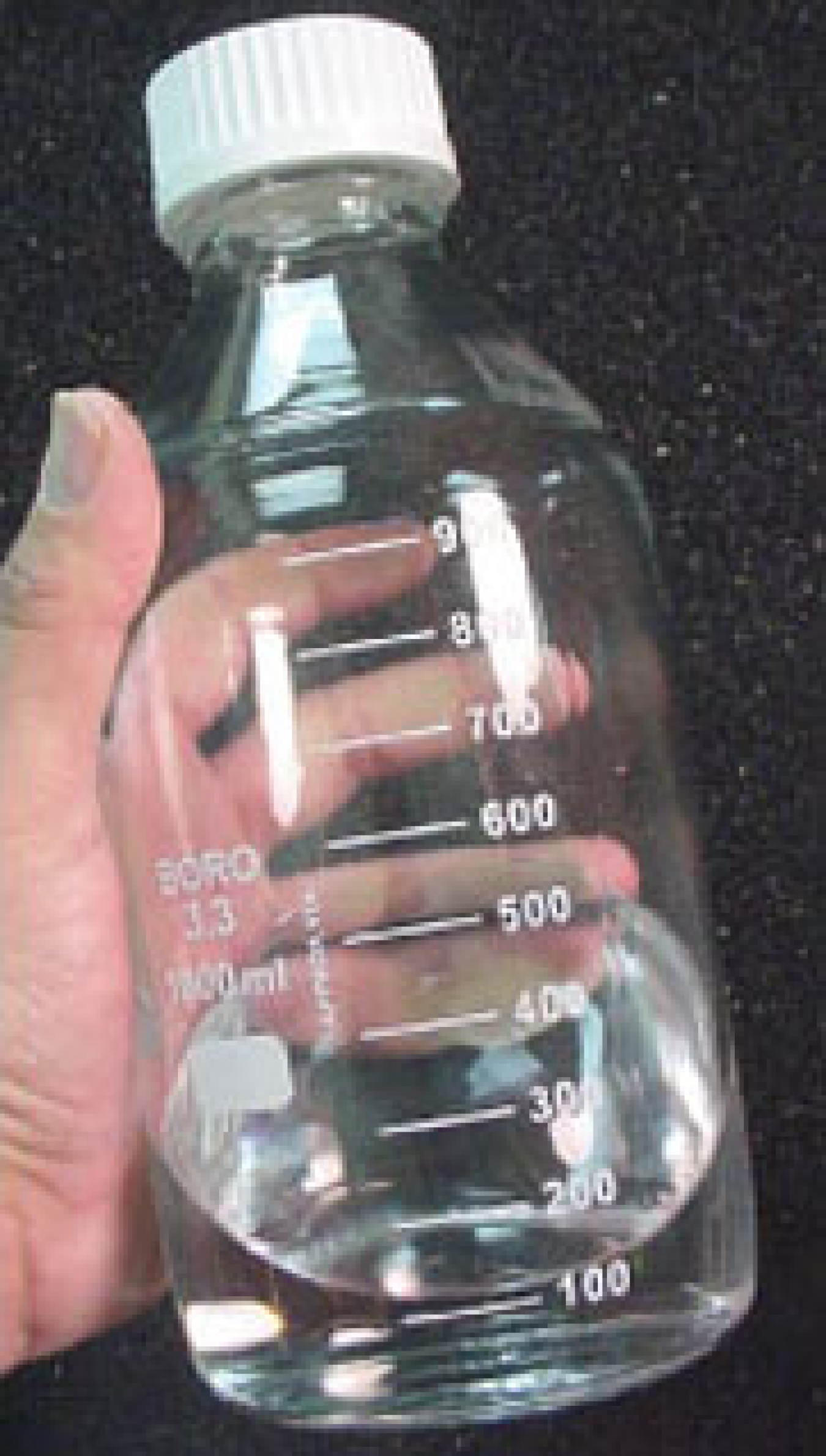-- This project is inactive --
Los Alamos National Laboratory, under an ARRA CSP Award, is developing a thermally stable, working heat transfer fluid (HTF) that is integrated with chemical reactions as a methodology to store large amounts of latent heat.
Approach
Low-molecular-weight fluids composed of siloxane-based materials are the technical foundation for the integrated fluid system. These low-molecular-weight fluids promise multiple benefits, including:
- High thermal stability
- Low vapor pressure
- Sub-ambient melting points
- Low viscosity slopes.
The thermal heat capacity of this fluid is supplemented by the integration of latent heat stored in the form of chemical reactions.

This photo shows the first generation siloxane-based heat transfer fluid with demonstrated operational stability at 550 °C.
Innovation
There are three technical thrusts working in concert to form an integrated HTF package:
- Creating methodologies to stabilize a silicone-based working fluid at temperatures approaching 600°C
- Developing of a new latent heat storage mechanism utilizing chemical reactions for capturing, storing, and releasing high quality heat
- Integrating the chemical reagents for latent heat storage into the silicone-based working fluid.
When these development efforts are assembled, the resulting heat transfer fluid package should be able to operate at temperatures approaching 600°C with extremely high latent heat storage capability.
Learn about other concentrating solar power research.

